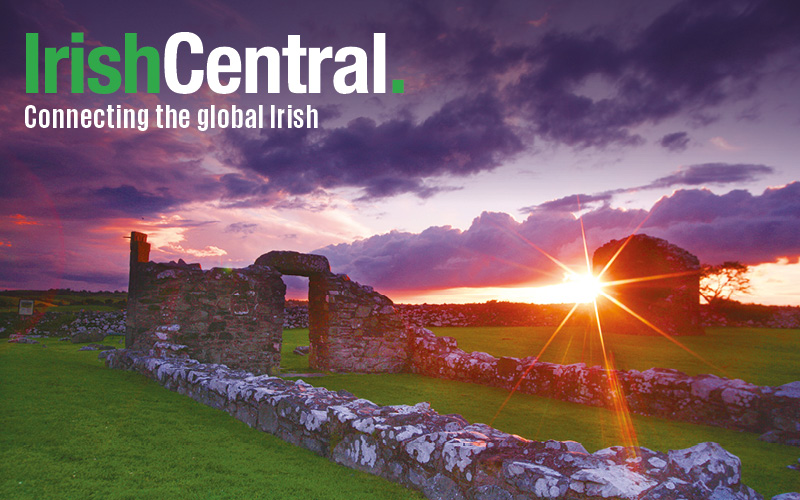As an island on the western edge of Europe, Ireland is surrounded by water and rimmed by mountains, giving it a range of spectacular scenery, with verdant valleys, lush vegetation, rare flowers and unexpected palm trees. And with over 9,000 years of history, Ireland is dotted with an array of ancient monuments, dolmens, forts and castles. There are hundreds of great experiences, but reluctantly, I have pared them down to 10 to whet your appetite for a visit to the Emerald Isle.
1. Start with a Capital Caper
Dublin’s Fair City is the hub of Ireland, one of Europe’s most picturesque and popular capitals, dating back over 1,000 years. Medieval, Georgian and modern architecture provides a backdrop to this cosmopolitan port city, and a unique experience awaits around every corner. Step back in time at Dublin Castle, Christchurch Cathedral, or St. Patrick’s Cathedral, marvel at the artistry of The Book of Kells at Trinity College, attend a classic play at the Abbey Theatre, sample a pint of Guinness at the Guinness Storehouse, or listen to the street music of the buskers on Grafton Street or in Temple Bar. More information: www.visitdublin.com.
2. Stop & Smell the Roses
County Wicklow is the Garden of Ireland, a breath of fresh air just south of Dublin, with a profusion of flower-filled glens and gardens. You can smell the roses at Powerscourt Gardens in Enniskerry – and marvel at all of the rose colors – not just red, pink, yellow and white, but blue, lavendar, and orange. Mount Usher Gardens at Ashford present a feast of rhododendrons, magnolias, camellias, eucalyptus and palms. In the heart of the county is Wicklow National Park , a carpet of wild flowers in a panoramic landscape of mountains, lakes and bogs.
3. Step Back into History
The Boyne Valley of Co. Meath is a treasure-trove of Ireland’s antiquities, led by Newgrange, considered as one of the finest archaeological wonders of Western Europe and designated as a World Heritage Site by UNESCO. Built between 3500 BC and 2700 BC, it was used as a tomb in which Stone Age men buried their dead. It is estimated that it took at least 40 years to build – the equivalent of a life’s work for a whole generation. Newgrange is 500 years older than the pyramids of Giza and 1,500 years older than Stonehenge. Nearby you can also walk in regal footsteps at the Hill of Tara, seat of early Irish high kings and the host of great open-air assemblies more than 2,200 years ago. Or take guided tours of mighty castles still standing – Trim Castle and Slane Castle.
4. Take a Medieval Break
For an old world atmosphere, all roads lead to Kilkenny, Ireland’s medieval city, a charming and easily walkable maze of narrow streets, cobbled lanes and ancient slipways. The centerpiece is Kilkenny Castle, dating back to 1192, with a striking façade of huge towers and battlements edging the banks of the River Nore. At the opposite end of town is St. Canice’s Cathedral, founded as a monastery in the 6th century and re-built in the 13th century. It is the second-longest of Ireland’s medieval cathedrals.
5. Kiss the Blarney Stone
“Did you kiss the Blarney Stone?” is a question that you will likely be asked if you visit Ireland. It is one of Ireland’s most popular visitor attractions, so be sure to include it in your plans. Head to Blarney Castle at Blarney, County Cork, Ireland’s largest county, on the southwest coast. Located five miles west of Cork City, Blarney Castle was built c. 1446 and the famous stone is at the top of the square keep (via over 120 curved stone steps). In order to kiss it, visitors must climb the steps and then lie down on the parapet and bend backwards. It sounds dangerous but the area is fully protected and a trained guide directs all the kissing. The hardest part is climbing up and down the steps. But, if you do, legend says that you will receive the gift of eloquence!
6. Ride in a Jaunting Car
For an Ireland experience you’ll never forget, hop on board a traditional horse-drawn jaunting car in the Killarney National Park, a 25-square-mile area of unpolluted lakes and car-free unspoiled scenery. The jaunting cars, which travel on off-road designated paths, are synonymous with Killarney, sort of what cable cars are to San Francisco or gondolas to Venice. The driver, known as a jarvey, is both a guide and storyteller (and with encouragement, he’ll sing you a song as well). Besides the clip-clop of the horse and the jarvey’s gentle voice, all you’ll hear is the birds and the whisper of the wind. Killarney is one of Ireland’s great beauty spots - edged by the Atlantic, surrounded by Ireland’s tallest mountains, and warmed by the Gulf Stream breezes of the southwest coast.
7. Climb to the Cliffs
The Cliffs of Moher is the prime natural wonder of Ireland’s west coast, stretching for five miles and rising almost 700 feet above the Atlantic Ocean. The top of the Cliffs provides a panoramic vantage point for views of the sea and the surrounding counties of Clare, Galway, Limerick and Kerry. On a clear day some people jest that they see the tip of Manhattan in the distance. Every day, busloads of tourists make their way into the rocky terrain of The Burren to reach this rural outpost. New visitor facilities, opened in early 2007, make the ages-old experience even more stunning, including a state-of-the-art domed interpretative centre - "The Atlantic Edge" - covered by a grassy hillside, to blend with the surroundings. The centre presents interactive exhibits and displays as well as audio-visual shows and a cyclorama.
8. See the Sun Go Down on Galway Bay
If you plan to “see the sun go down on Galway Bay,” head to Connemara overlooking Galway Bay in the western part of County Galway. Named from the Irish words, Cuain na Mara, “Connemara” means “harbors of the sea.” And Connemara is one continuous panorama of harbors and seascapes, plus the awesome Twelve Bens mountains and endless boglands. Beyond the Galway Bay views, sheep graze on the rocky hillsides, the sweet aroma of turf fires permeates the air, and road signs are painted in the Irish language.
9. Venture off the Beaten Path
Be a trendsetter. Go to Donegal. Only 10% of Americans who visit Ireland ever get to this isolated area, in the remote northwest corner of Ireland, but it is well worth the extra effort to drive up from Dublin, Shannon, Galway, or other more popular tourist hubs. Tweed is the lifeblood of Donegal. No one knows exactly when the industry began but one thing is certain – the making of colorful hand-woven tweed has put Donegal on the map – and visitors are welcome to watch tweed being woven at enterprises such as Magees in Donegal Town or Studio Donegal in Kilcar. Once people come here for the tweed, they find many other reasons to be glad that they have made the long journey. This area not only offers heaping measures of natural scenery and unspoiled beauty, but it is also rich in Irish culture and tradition. Many road signs are in Irish, too, so it is easy to get lost, but that is part of the fun, because the locals will come out of nowhere to help and set you on the right road, or maybe even invite you home for tea.
10. Sample the Northern Delights
The Northeast corner of Ireland – otherwise called Northern Ireland or simply The North – is enjoying a new emphasis on political progress and harmony. Peace and prosperity have arrived, and Northern Ireland is a now a magnet for visitors. Two focal points are Belfast, quickly becoming Europe’s new “in” city, and Derry, one of Europe’s finest intact walled cities. Scenic areas include the Glens of Antrim, Mountains of Mourne, and the silvery shorelines of Lough Erne, but the top attraction by far is the Giant’s Causeway, a natural rock formation stretching for three miles along the coast. Formed millions of years ago, the causeway is a UNESCO World Heritage site and often called the 8th wonder of the world.




Comments